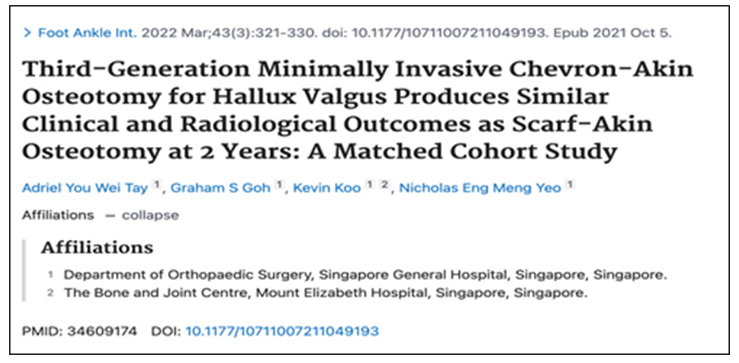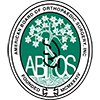Anthony Yi, MD
Orthopedic Surgeon
Foot and Ankle Specialist
Seattle, WA
As an orthopedic surgeon, I am dedicated to honing my craft. Just as an athlete trains and fine tunes their technique, a surgeon must also refine their skills (carefully studying imaging, planning surgeries, practicing techniques in a lab, and much more). Furthermore, our commitment to provide the best care possible to patients also necessitates our openness to newer, improved techniques.
However, it can be incredibly difficult to ascertain which new techniques actually provide benefit for patients. In addition, learning new techniques can be challenging as mastery of new techniques requires significant amounts of practice to overcome the learning curve.
As a specific example: initially, I was incredibly skeptical of minimally invasive bunion correction (click here to learn about minimally invasive bunion correction). It was an entirely foreign concept. Very briefly, it involves correcting a bunion with a special instrument called a “burr” through 3-4 very small incisions (each only requiring 1-2 stitches). There are over 100 different surgical methods to treat a bunion (or “hallux valgus”). The existence of numerous methods of bunion correction suggests 2 corollaries: 1. Bunions are a complex problem/deformity 2. There is not a single “best” method for all situations.
However, the minimally invasive technique has become my “go-to” for the vast majority of the bunions that I correct.
So how did I come to adopt minimally invasive bunion surgery into my practice? Mentorship and research.
Mentorship
My mentors have passed on an incredible wealth of knowledge and have taught me numerous surgical techniques that I believe are game changers for my patients. I am grateful for all my mentors.
I am particularly grateful for having such a great exposure to minimally invasive surgical techniques during fellowship. As a fellow, I had the opportunity to initially observe, then practice on cadavers, and eventually perform minimally invasive bunion surgeries (under supervision) for patients.
A special shout out to Dr. Christopher Miller who taught me an incredible amount about minimally invasive surgery. His journey was inspiring especially as he didn’t have the luxury of having an entire fellowship training during which he was taught these techniques. Instead, he went out and learned the techniques, spent countless hours practicing in labs, and went to conferences/courses across the world. And now, he is the one teaching minimally invasive surgery courses.
In short, my biggest motivations to incorporate minimally invasive bunion correction into my practice were my firsthand experiences learning minimally invasive surgery techniques from my mentors and seeing how successful it was for patients.
Research
Although I am no longer in an academic setting, I have a true appreciation for research as it is imperative to answer important questions and honestly evaluate if we are doing the best we can for our patients.
I believe that it is critical to continue studying the most current research publications and to stay up-to-date. My “go-to” journal is Foot and Ankle International – the official journal of the American Orthopedic Foot and Ankle Society – because it provides high quality, peer-reviewed studies on a monthly basis that pertain specifically to issues involving the foot and ankle.
No one study is perfect. However, I am generally willing to consider modifying my practices if there are several quality studies that support a particular technique or treatment strategy.
On the subject of minimally invasive bunion surgery: there are numerous studies showing that minimally invasive bunion correction is successful (corrects bunion, decrease pain, and is safe).
For example, the following study is one of the most recent examples of evidence supporting minimally invasive bunion surgery as a safe and effective way of fixing bunions.

In this study, the authors compared 30 patients who underwent minimally invasive bunion correction to 30 patients who had a traditional bunion correction procedure. In my opinion, one of the biggest strengths of the study was that the authors performed a “propensity score match” between the minimally invasive surgery group and the traditional surgery group. In short, the authors made sure that the patients in the minimally invasive surgery group had similar characteristics (age, sex, BMI, baseline pain, baseline function, x-ray’s, severity of bunion) to the traditional bunion correction group. This ensures that they were comparing “apples to apples” and that any differences that were found can be attributed to surgical technique itself and not another factor. For example, it wouldn’t be fair to say that technique A was better if all of the people having technique A were healthier, had less severe bunions, and had less pain to begin with.
The authors then evaluated the patients for 24 months after surgery. They found that the patients that had minimally invasive bunion correction did just as well as the traditional surgery patients. In addition, the patient who underwent minimally invasive surgery had less pain in the early post-surgery phase and were able to start weight bearing right away.
This study highlights the main reasons why I perform minimally invasive bunion correction:
- It is just as effective as traditional techniques (straightens out the bunion, removes the bump, and alleviates pain)
- There is significantly less pain in the early post-surgery phase (my patients who have minimally invasive bunion correction on one side and traditional surgery on the other side say that there is a “night and day” difference)
- It involves much smaller incisions/scars
- It is safe even when allowing patients to start walking the day after surgery
- NB: I ask patients to limit themselves to the essentials of day-to-day life and they must walk with a special shoe to protect the foot








